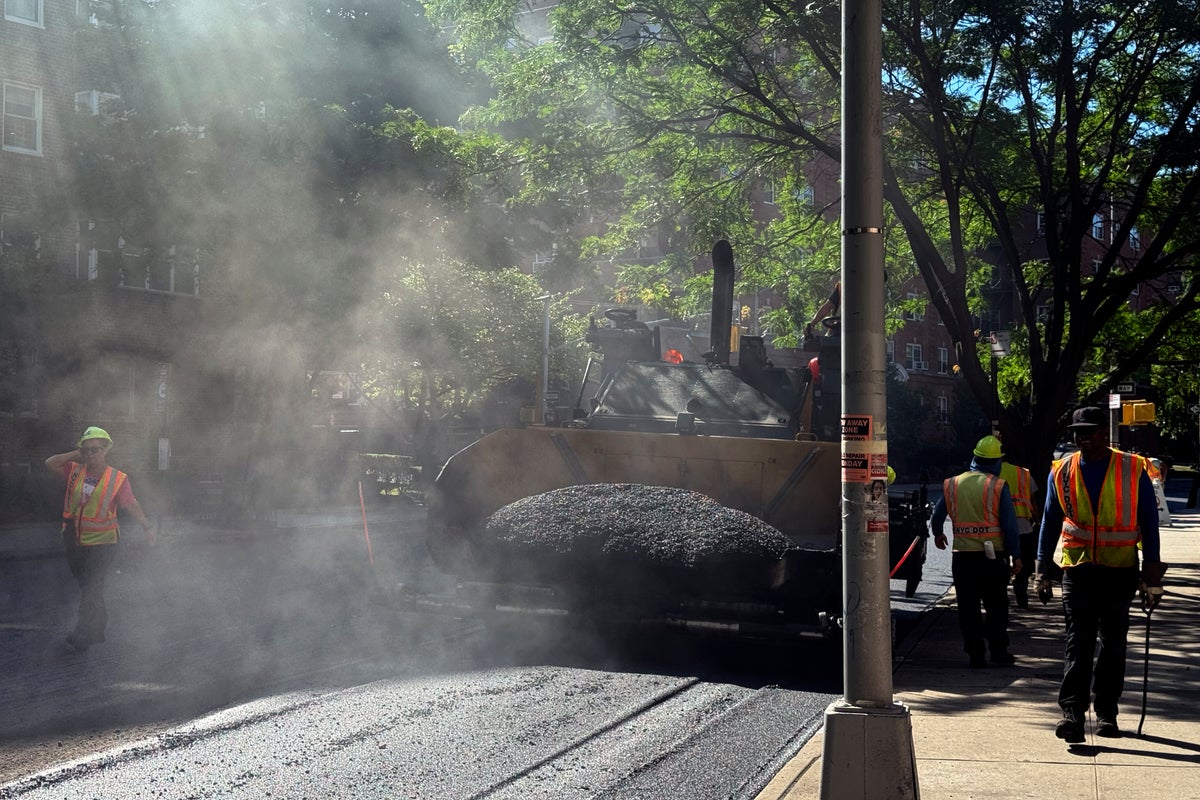
Support truly
independent journalism
At the start of every work day, construction worker Charles Smith puts on the essentials: hard hat. Safety glasses. A reflective vest. And a small, watch-like band for his wrist.
But rather than track time, its purpose is to ensure he doesn't overheat while working during sweltering summer days in Texas. The wristband monitors his heart rate, core body temperature, stress level and more. If it detects signs of overheating, it warns him and his safety manager, advising Smith to rest and hydrate. The device serves as an early warning system to prevent heat-related injuries and illnesses.
The technology is one way that workplaces are setting up employee protections as summers grow hotter, longer and more extreme due to climate change. On Sunday, the Earth reached the hottest day ever measured, according to a European climate service group. And in the absence of federal heat rules for workers, which the Biden administration recently proposed, some employers in states without rules are taking it upon themselves to safeguard employees from extreme heat dangers.
“We can catch it before it happens,” said Seth Campbell, safety manager for the construction company Rogers-O’Brien, Smith’s employer, of monitoring signs of heat-related illnesses. Their team started using the technology last summer.
UPS recently equipped delivery drivers with cooling hats and sleeves that provide relief from heat — and increased access to ice, cold water and electrolytes for employees, according to its website. They have also added more cooling equipment to its vehicles and facilities, said vice president of global communications Genny Bowman in an email. That includes installing exhaust heat shields to lower vehicle floor temperatures, as well as fans in package cars and more fans in its facilities.
Some greenhouse companies, including Eden Green and Cox Farms, have said they adjust workers’ schedules to account for excessive heat, such as starting them earlier in the morning, breaking during peak heat, and returning in the evening as temperatures cool.
During June’s record-breaking heat wave in the Midwest and Northeast, an organization in Columbus, Ohio, prepared frozen towels and cold water for their workers to stay cool and hydrated.
And in some California warehouses, where indoor temperatures can reach above 90 degrees Fahrenheit (about 32 Celsius), employers have provided cooling vests with ice packs in them and bandanas that can get cool when wet, according to Tim Shadix, legal director for the Warehouse Worker Resource Center, a nonprofit dedicated to improving working conditions in Southern California's warehouse industry.
Such measures can help keep workers cool and comfortable, but Shadix said they're not enough to protect them from worsening heat dangers. “Under standard workplace safety practices, those are meant to be responses of last resort," he said, "but when you’re addressing a hazard, including heat, you usually try to start with what’s most effective," which can include installing air conditioning, slowing down the workplace schedule or providing more breaks.
Last summer, during a historic heat wave, the Texas-based Rogers-O’Brien launched a pilot program that gives workers the option to wear a heat sensor paired with a software called SafeGuard. If the worker's heart rate or body temperature are too high, Campbell is among the people who receives an alert to check on them. He then assesses ways to cool them down, such as putting ice packs under their armpits.
“Last year we had two alerts and we were able to get that employee to the shade inside, get (them) plenty of electrolytes, and we didn't have any clinic visits with anyone wearing the technology," he said.
On really hot days coupled with intense physical exertion, Smith's wristband has warned him and the safety manager that his body temperature and heart rate were high. It served as a signal to take a shaded break and drink water. And he did.
“The importance of it could stretch very far," said Smith on a day of triple-digit temperatures. "Making sure that workers stay at levels where they could actually go home every night and see their families, making sure that workers are able to recover properly. I think it could be a great benefit to the industry and just about any other industry."
———
Pineda reported from Los Angeles.
———
The Associated Press receives support from the Walton Family Foundation for coverage of water and environmental policy. The AP is solely responsible for all content. For all of AP’s environmental coverage, visit https://apnews.com/hub/climate-and-environment.







